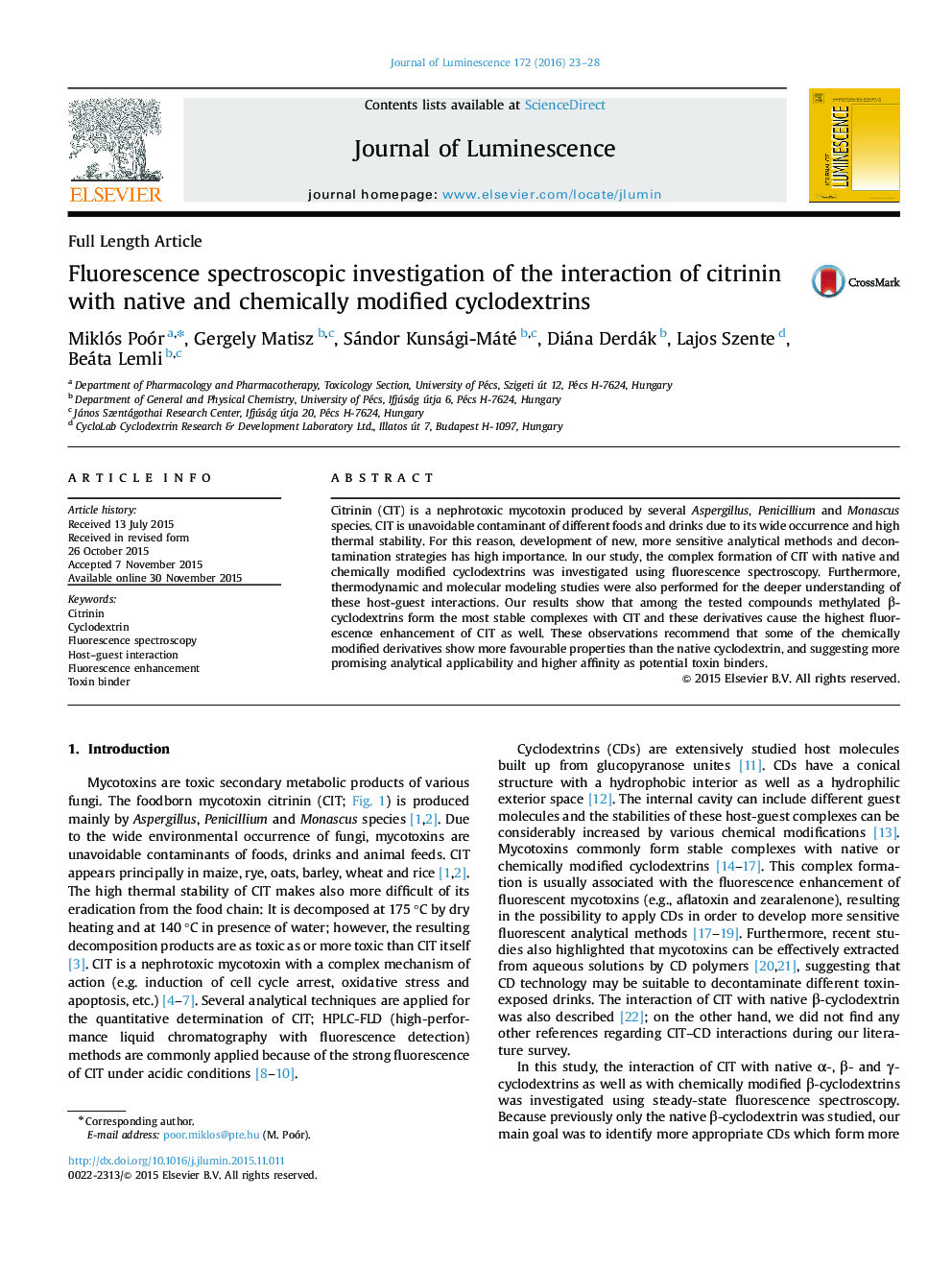| Article ID | Journal | Published Year | Pages | File Type |
|---|---|---|---|---|
| 5398614 | Journal of Luminescence | 2016 | 6 Pages |
Abstract
Citrinin (CIT) is a nephrotoxic mycotoxin produced by several Aspergillus, Penicillium and Monascus species. CIT is unavoidable contaminant of different foods and drinks due to its wide occurrence and high thermal stability. For this reason, development of new, more sensitive analytical methods and decontamination strategies has high importance. In our study, the complex formation of CIT with native and chemically modified cyclodextrins was investigated using fluorescence spectroscopy. Furthermore, thermodynamic and molecular modeling studies were also performed for the deeper understanding of these host-guest interactions. Our results show that among the tested compounds methylated β-cyclodextrins form the most stable complexes with CIT and these derivatives cause the highest fluorescence enhancement of CIT as well. These observations recommend that some of the chemically modified derivatives show more favourable properties than the native cyclodextrin, and suggesting more promising analytical applicability and higher affinity as potential toxin binders.
Keywords
Related Topics
Physical Sciences and Engineering
Chemistry
Physical and Theoretical Chemistry
Authors
Miklós Poór, Gergely Matisz, Sándor Kunsági-Máté, Diána Derdák, Lajos Szente, Beáta Lemli,
